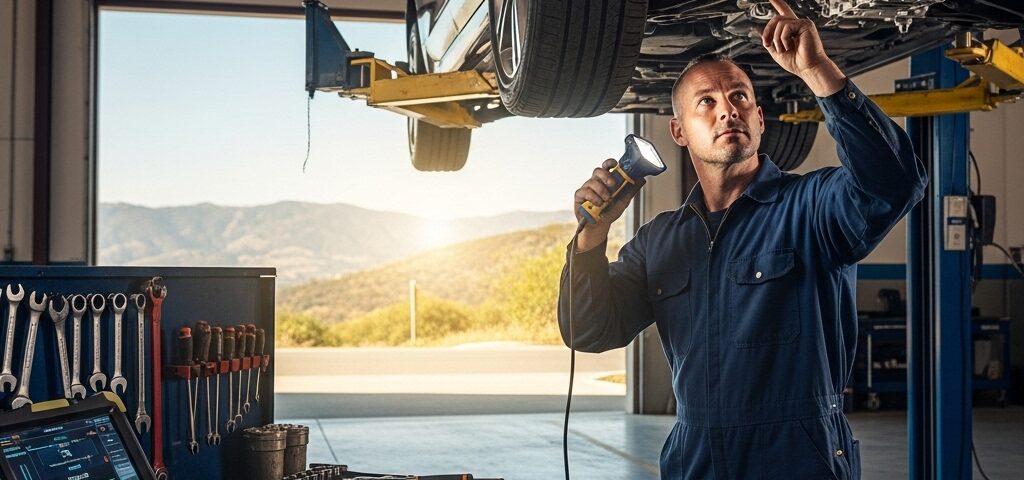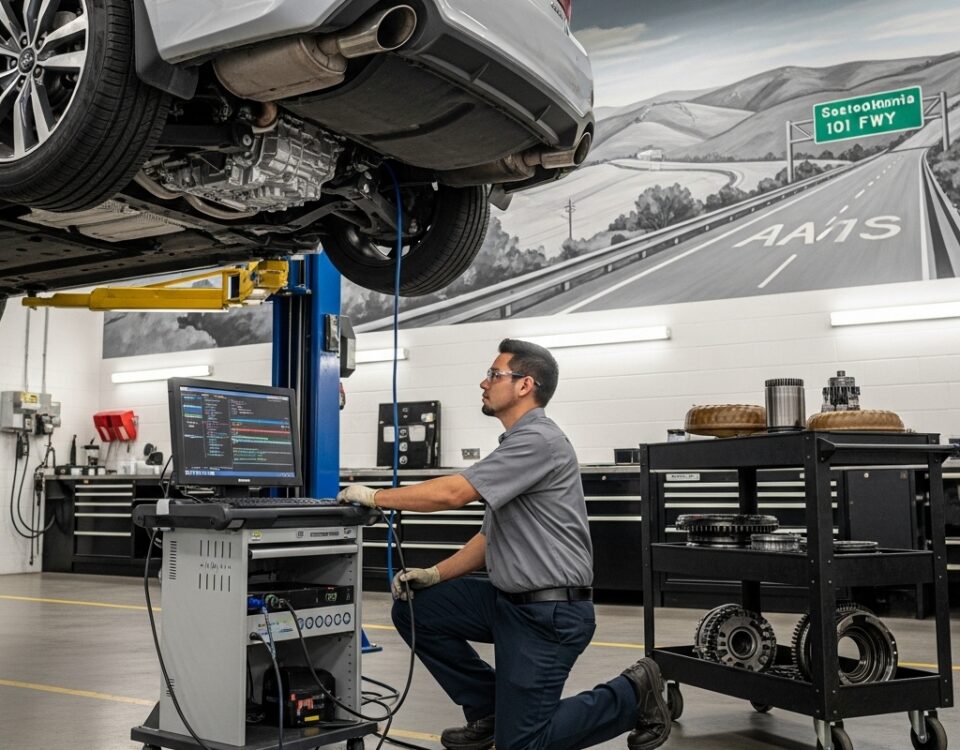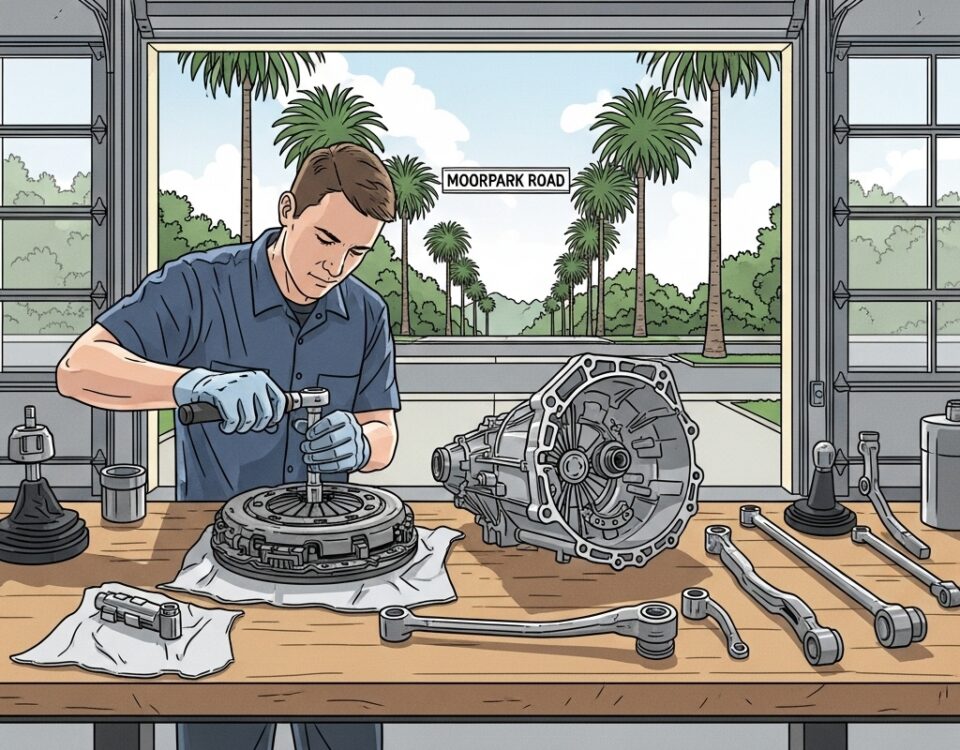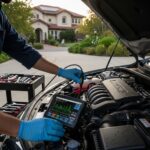
Car Repair For Engine Diagnostics In Thousand Oaks California
October 5, 2025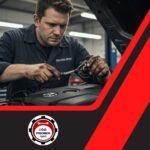
Experience Premium Care with a Trusted Mercedes Benz Mechanic
October 6, 2025When you live and drive in Thousand Oaks, the health of your transmission quietly shapes every errand, commute, and weekend escape over the Conejo Grade. Morning merges onto the 101, afternoon zips across Lynn Road, and evening cruises past the Civic Arts Plaza all depend on smooth, predictable shifts. That’s why finding reliable, nearby transmission repair isn’t just a convenience—it’s peace of mind woven into your daily routine. As a local, I’ve seen how small changes in road conditions, weather, and driving style can add up, and I’ve also seen how early attention to subtle symptoms makes the difference between a minor adjustment and a bigger mechanical project. Thousand Oaks isn’t just another dot on the map; it’s a community where your vehicle’s reliability keeps pace with your life.
The Thousand Oaks driving reality
From Oak Park to Newbury Park, the Conejo Valley’s varied terrain gives transmissions a full workout. Stop-and-go traffic along Moorpark Road, steady climbs toward the 23, and breezy descents toward Camarillo build a driving rhythm that rewards consistent maintenance. Even our mild Mediterranean climate has its quirks—warm afternoons can thin old fluid and aggravate any underlying issue, while cool mornings might mask early signs of hesitation. Neighborhood streets around Wildwood Regional Park feel gentle, but skip a fluid service and you may notice a tardy upshift on Avenida de Los Arboles or a shudder getting onto Hillcrest. The environment doesn’t cause problems on its own; it simply reveals what your transmission is already trying to tell you.
Symptoms worth your attention
Transmission concerns often begin quietly. A delay slipping into drive in the Janss Marketplace parking lot, a faint whine at 40 mph as you pass The Oaks, a curious bump when you crest the 101 interchange—these are the early breadcrumbs. Some drivers notice a subtle flare in engine RPM when the vehicle should be shifting, others feel a one-time clunk that becomes an occasional guest. The key is pattern recognition. If something feels new, more pronounced, or more frequent, don’t wait for it to escalate. Thousand Oaks’ dense traffic corridors are not the place to test mechanical gambles, and taking action early protects both your safety and your schedule.
Why your choice of local shop matters
Transmission work is part science, part craftsmanship. You want technicians who know the quirks of your vehicle and the realities of driving here. Local experience counts when diagnosing a symptom that only appears after a long glide from Westlake Village or during a steep climb toward the 23. Shops rooted in the community tend to maintain long relationships with suppliers, which helps with turnaround, and they see the same regional driving patterns again and again. That familiarity brings sharper troubleshooting and a steadier hand when it’s time to measure, adjust, and road test. Most importantly, a trusted local shop is close enough for quick follow-ups and post-service inspections—convenience that translates into better long-term care.
The role of modern diagnostics
Today’s transmissions are sophisticated networks of hydraulic precision and electronic oversight. A proper inspection involves more than a test drive and a glance under the vehicle. It starts with listening—to you. When does the symptom appear? At what speed, temperature, and gear? From there, a technician will check fluid health, scan for transmission control module data, analyze shift timing, and verify whether a fault is mechanical, hydraulic, or electronic. Thousand Oaks roads provide a great real-world test loop: city streets for light throttle shifts, highway stretches for consistent load, and a couple of grades to reveal thermal behavior. Accurate diagnosis is not about guessing what part might be weak; it’s about verifying how the system behaves under predictable conditions.
Driving habits that keep transmissions happy
Small tweaks in everyday driving can extend transmission life. Warm your vehicle gently as you roll through your neighborhood rather than jumping straight to highway speeds. Avoid lugging the engine up the Conejo Grade; downshift or use manual mode if your vehicle offers it to keep revs in a healthier range. When parking at The Oaks or stopping for coffee along Thousand Oaks Boulevard, allow the car to come to a full stop before shifting from reverse to drive. On hot summer days, give your vehicle a minute to idle after a long uphill stretch to stabilize temperatures. These practices are not complicated, but they add up, lowering heat and wear—the two primary forces that erode transmission health over time.
Maintenance that makes a real difference
Think of transmission maintenance as a schedule tailored to how and where you drive. In a place like Thousand Oaks, with a balanced mix of highway and surface streets, fluid condition is a crucial indicator. Fluid that looks darker or smells burnt deserves attention. Many drivers feel uneasy about service intervals because of conflicting advice they read online. The truth is your ideal schedule depends on your vehicle’s design and your usage. A good shop will check fluid, evaluate shifting behavior during a supervised drive, and guide you toward a plan that makes sense for your commute, not someone else’s. That personalized approach is the heart of dependable ownership.
How early repairs protect the rest of the car
When a transmission hesitates, your engine and drivetrain pick up the slack. A delayed upshift can push the engine to higher RPM for longer than necessary, adding extra heat. A harsh downshift can nudge mounts and CV joints more than intended. Left unchecked, those ripples echo throughout the vehicle. Drivers sometimes ignore a small issue because the car gets from point A to B. But if you’ve ever felt a stumble pulling onto the 101 near Hampshire Road, you know how quickly a small hesitation becomes a big moment. Addressing concerns early isn’t about perfectionism; it’s about harmony between systems so your vehicle works as one.
Choosing between repair, service, and overhaul
A thorough evaluation clarifies whether you need a software adaptation, a fluid service, a specific component repair, or more comprehensive work. Not every rough shift points to a major intervention. Sometimes it’s a solenoid behaving inconsistently or a valve body that needs attention. Other times, wear has accumulated enough that a broader plan makes sense. The right path is grounded in test results and your goals for the vehicle. If your car is your trusted companion on weekend drives through Hidden Valley, keeping it healthy for the long term has real value. A candid conversation with your technician helps align the recommendation with your priorities.
Mid-journey check-in: what to do right now
If you’re halfway through this guide and thinking about a slip, whine, or hesitation you’ve noticed, you’ve already taken the first step—awareness. The next is to document when it happens. Does it coincide with rolling onto Lynn Road after the freeway? Is it more likely during hot afternoons? Take mental notes and share them during your visit. Good information speeds up good diagnosis. When you’re ready, reach out for professional transmission repair so a local team can evaluate the pattern you’re feeling and translate it into clear answers.
Road-testing in Thousand Oaks conditions
A purposeful road test is where observations become evidence. Start with gentle acceleration on Moorpark Road to watch light-throttle shift points, then move to steady highway speeds on the 101 to evaluate torque converter lockup and mid-range behavior. A mild grade up toward the 23 can reveal issues that only appear under load. Back on surface streets, slow rolling stops test downshifts for smoothness. The technician isn’t just listening for noises; they’re correlating what they hear and feel with live data. Done well, the test provides a map of the transmission’s behavior so the solution is targeted, not generalized.
Confidence that comes from clarity
One of the most reassuring parts of working with a skilled local shop is the clarity you receive. Instead of vague descriptions, you get a precise explanation of what’s happening and why. That could be as simple as a fluid that’s lost its protective properties or as specific as a component exhibiting wear under certain temperatures. Either way, clarity removes the stress of the unknown. In a city where time is precious and schedules are full, knowing exactly what your vehicle needs—and what it doesn’t—helps you plan without second-guessing.
Planning around your daily life
No one wants their car out of commission longer than necessary. That’s where local convenience shines. A shop near your commute can coordinate drop-offs around school runs to Conejo Valley Unified campuses or morning meetings near Westlake. If you need updates, you can swing by on your lunch break or arrange a quick call. That proximity fosters collaboration: if a technician wants to recheck something after a few days, it’s easy to pop in. Ultimately, local transmission care is about more than mechanical skill—it’s about flexible service that respects your time.
What to expect during your visit
Expect a conversation first. You’ll describe symptoms, a technician will ask follow-up questions, and together you’ll lay out a test plan. After initial checks, you’ll get a report describing what’s verified and what’s suspected. If multiple approaches are possible, the team will walk you through pros and cons so you can decide with confidence. You’ll also learn what to look for after you leave: how the car should feel, what minor changes are normal as adaptations reset, and when to return for a quick recheck. This partnership approach ensures you’re part of the process, not just an observer.
Keeping your vehicle ready for Conejo Valley life
Thousand Oaks is built for movement—soccer practices at the parks off Janss Road, dinners in Westlake Village, weekend hikes at Wildwood. Your transmission is the unheralded teammate making those plans possible. Treating it well isn’t just responsible; it’s freeing. You drive with confidence, knowing your car will be there for the early morning commute and the late-night return. That assurance is the real value of choosing capable, nearby care and staying in tune with the signals your vehicle sends.
Frequently asked questions
How do I know if my transmission needs attention?
Watch for new or worsening patterns: delayed engagement when shifting into drive, slipping during acceleration, unusual noises that rise and fall with road speed, or harsh shifts during light throttle. If you can reproduce a symptom at the same speed or temperature, it’s worth a professional look. Jot down when it happens and share those details during your visit.
Is it safe to keep driving if the car still moves?
Sometimes a vehicle will continue to operate despite early transmission issues, but that doesn’t mean it’s wise. Continued driving can increase heat and accelerate wear elsewhere in the drivetrain. If the symptom is pronounced or appears suddenly, consider limiting use and scheduling an evaluation as soon as possible.
Can changing fluid fix shifting problems?
Fresh fluid can improve feel when the issue is related to degraded fluid properties or thermal stress, but it’s not a cure-all. Modern transmissions are complex; a proper diagnostic review ensures the right action is taken, whether that’s service, software adaptation, component repair, or more comprehensive work.
What information should I bring to my appointment?
Bring a timeline of symptoms, any dash warnings you’ve seen, recent maintenance history, and details about driving conditions when the issue appears. If you’ve noticed temperature patterns—like symptoms that arise after driving up the Conejo Grade—include that too. Clear information shortens the path to a reliable solution.
How long does a proper diagnostic take?
It varies. A straightforward concern might be verified and explained the same day, while intermittent issues could require additional test loops or cold and hot evaluations. Transparency about process and timing is part of good service, and a local shop can coordinate these steps around your schedule.
Will a minor symptom always become a major problem?
Not always. Some issues are modest and manageable when addressed early. The challenge is distinguishing minor from meaningful. A thorough inspection provides that distinction so you can make a confident decision before small concerns snowball.
Can local terrain really influence transmission behavior?
Yes. Grades, speed changes, and temperatures affect how components load and how fluid manages heat. Thousand Oaks offers a useful mix of conditions that, when used in a structured road test, reveal the underlying behavior clearly. Technicians familiar with these roads use them to produce consistent, repeatable results.
Talk to a local transmission specialist today
If a hesitation or harsh shift has been nagging at you, now is the perfect time to get clear answers. Schedule a visit with a trusted Thousand Oaks team that understands our roads, climate, and driving habits. Your commute, errands, and weekend plans will all feel easier when your vehicle shifts with confidence. Reach out now for dependable transmission repair and get back to smooth driving across the Conejo Valley.


